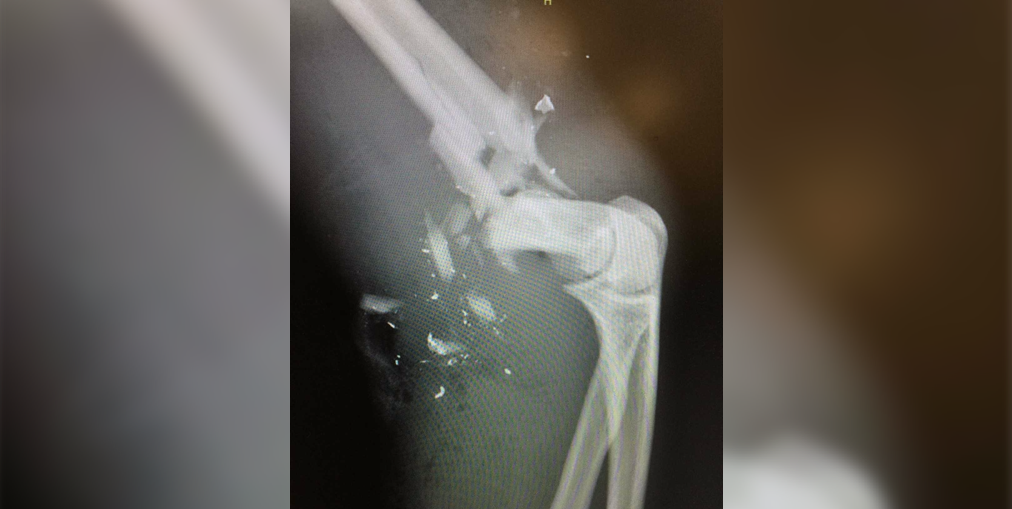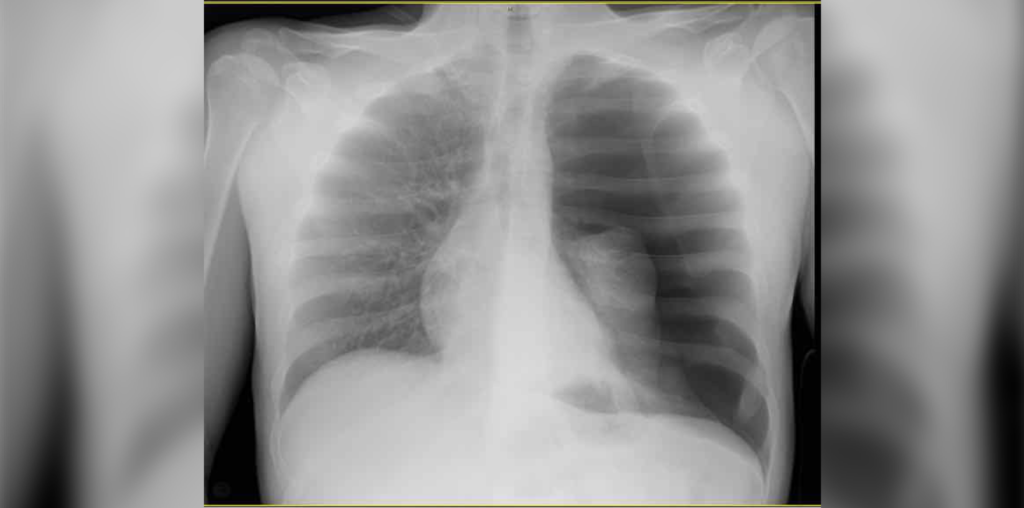Learning Objective
- Recognize the importance of a secondary survey in trauma
A 42-year-old patient is brought to the emergency department (ED) via ambulance after being shot in the left arm. When emergency medical services (EMS) arrived, the patient was sitting upright and alert, but a makeshift tourniquet was full of blood. EMS performed a head-to-toe exam on the field while starting a large bore IV in the uninjured arm and removing the makeshift tourniquet with a new tourniquet because the patient was still bleeding. The head-to-toe review by EMS found a penetrating injury in the chest, and the patient was mildly short of breath with conversation.
On presentation to the ED, the team performs an ATLS assessment and secondary survey. The patient is awake and alert but experiencing increasing shortness of breath. Left-sided breath sounds are decreased, and a portable chest X-ray reveals a left tension pneumothorax. Following its discovery during the secondary survey, the tension pneumothorax is immediately relieved by placing a large bore needle in the second intercostal space in the mid-clavicular line, then breath sounds are reassessed. The patient’s breathing and vital signs improve, so the left arm injury is assessed while a second large bore IV is placed, labs are drawn, pain medication started, and a chest tube kit ordered. The bleeding on the left arm stopped with the tourniquet, so an X-ray of the wound is ordered. The radiograph reveals a shattered distal humerus with bone and bullet fragments near the joint.
The patient is stabilized with IV fluid and a chest tube placed with full lung expansion and no significant blood in the tube. The patient is taken to surgery three hours after the injury and recovers well.
In this case the patient was at risk of having a missed tension pneumothorax due to the distracting arm injury, if a full secondary survey had not been performed. Because of the arm injury, the patient had not realized the bullet had also penetrated the chest wall. Quick thinking on the part of the ED team led to a rapid diagnosis and resolution of the tension pneumothorax.
Further Reading
References
Paydar S, Farhadi P, Ghaffarpasand F. Advanced Trauma Life Support (ATLS) Tips to Be Kept In Mind. Bull Emerg Trauma. 2013 Jan;1(1):49-51. PMID: 27162823; PMCID: PMC4771244.
The ATLS Subcommittee, American College of Surgeons’ Committee on Trauma, and the International ATLS working group. Advanced trauma life support (ATLS®): The ninth edition. Journal of Trauma and Acute Care Surgery: May 2013 – Volume 74 – Issue 5 – p 1363-1366
Originally published June 8, 2021; updated February 22, 2023
Want more clinical cases?
Join Figure 1 for free and start securely collaborating with other verified healthcare professionals on more than 100,000 real-world medical cases just like this one.

